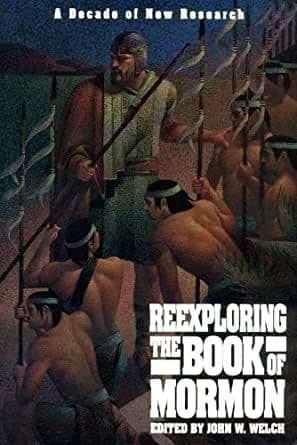Book
85 Chapters

Mosiah 20:1 “There was a place in Shemlon where the daughters of the Lamanites did gather themselves together to sing, and to dance.”
Just as the month of February means Valentine’s Day (and sometimes Bachelors’ Leap Year Day) to many Americans, the 15th of Av had significance to the ancient Israelites. On that day in the fifth month of the Israelite calendar (which fell originally on midsummer’s day), the maidens of Israel would gather to dance. This was, among other things, a “matrimonial holiday for youth.”
This ancient holiday is described by Abraham P. Bloch.1 Bloch concludes that this unnamed holiday was of very early origin, dating back to Moses according to one rabbi.2 In those days, the festival was primarily a matrimonial holiday, very much like the Jewish Lag Ba’Omer of springtime. Following the conclusion of their summer chores in the fields, youths would turn their attention to “bride-hunting,” and the dance of the maidens was “designed to meet that end.”3 The dancing took place outside a temple city—during the period of the Judges, the dances were in the fields outside Shiloh. During later times they were at Jerusalem.
After the return of the Jews from their captivity in Babylon, the holiday took on a much different character. It became a festival of wood-gathering and of offerings of wood for the altar of the temple. This practice ended with the destruction of the Second Temple in Jerusalem by the Romans. The holiday briefly reappeared around A.D. 140 as a day to commemorate the termination of the Hadrianic persecutions of the Jews and to glorify the young Jewish patriots.4
Lehi and his people, of course, would only have known the earlier traditions of “dancing and bride-hunting,” and perhaps this sheds light on the time when the priests of Noah carried off twenty-four Lamanite daughters to be their wives.
Mosiah 20:1 tells that “there was a place in Shemlon where the daughters of the Lamanites did gather themselves together to sing, and to dance, and to make themselves merry.” This seems to say that the place was a customary one. The place may have been at an outlying shrine or sacred spot. It was not in the wilderness as such, for the priests went from there into the wilderness (see Mosiah 20:5), but neither was it inside a city.
There the priests found the young women, hid themselves and watched, and sprang out of their hiding places, taking the young women into the wilderness (see Mosiah 20:2-5). The Hebrew idiom translated “lying in wait” usually connotes premeditation and planning, implying that the priests may well have known of this place and the custom for young women to be there. Indeed, the young women apparently became the priests’ wives willingly enough; at least we find no indication that any of them tried to escape, and all of them later pled with their brothers and fathers not to kill their husbands (see Mosiah 23:33).
This suggests that the Lamanite daughters had gathered to dance in celebration of a vestige of something like the preexilic Israelite festival of the 15th of Av. Is that how the priests of Noah knew where to go and when to be there? Is that why the young women accepted the priests as husbands? After all, they would have been dancing to attract husbands.
The Old Testament records one similar occurrence. During the period of the Judges, a feast of Jehovah was held “yearly” at Shiloh, which was then the religious center of Israel. One year, the men of Benjamin purposefully went to Shiloh on this feast day, laid in wait in the vineyards, caught “every man his wife of the daughters of Shiloh,” and took them to the land of Benjamin (Judges 21:16-23). Although the Hebrew account is somewhat unclear, the Benjaminite men apparently planned to defend themselves when the men of Shiloh came after them by arguing that they had done the best thing: By taking the young women, they had not asked the Shilohites to give them their daughters, which would have violated the oath of Judges 21:18; furthermore, they had not taken the young women by bloodshed.
This isolated biblical account, however, does not give the whole picture. It does not convey the point that this celebration was probably a widespread festival observed for many centuries among the ancient Israelites. Furthermore, the “matrimonial character” of the dances is only identified “in later talmudic traditions.”5 There are several other famous incidents in history following similar lines: for example, the abduction of the Sabine women by the Romans. Many such ancient practices and attitudes may have been relevant also to Book of Mormon peoples.
Based on research by John W. Welch, Robert F. Smith, and Gordon C. Thomasson, February 1985.
Footnotes
1. Abraham P. Bloch, The Biblical and Historical Background of the Jewish Holy Days (New York: KTAV, 1978), 215-19.
2. See Babylonian Talmud, Baba Batra 121a.
3. Bloch, The Biblical and Historical Background of the Jewish Holy Days, 216.
4. Ibid., 217-18.
5. Ibid., 216.
Book
85 Chapters
Items in the BMC Archive are made publicly available for non-commercial, private use. Inclusion within the BMC Archive does not imply endorsement. Items do not represent the official views of The Church of Jesus Christ of Latter-day Saints or of Book of Mormon Central.